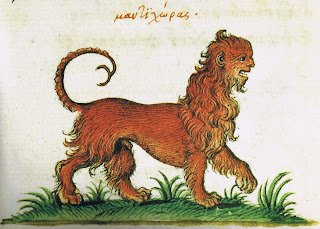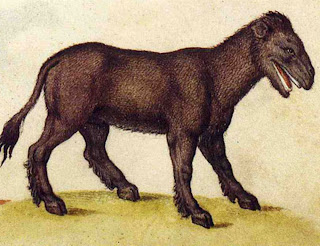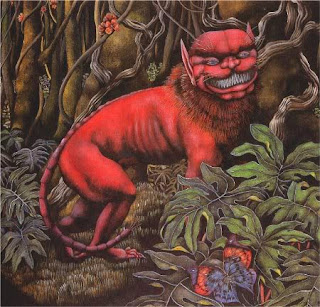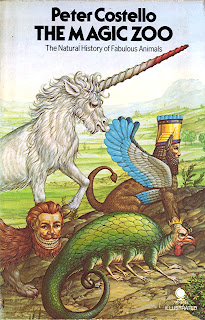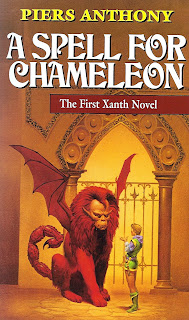Captive wild man being tamed by virtuous woman - Swiss tapestry, late 1400s
Homo sapiens was not the only species of human named and recognised by Linnaeus when publishing Systema Naturae, his revolutionary binomial system of zoological classification, in 1735. Among several others was Homo ferus, the wild man, which according to Linnaeus was covered in hair, moved on all fours, was mute, and lived apart from H. sapiens in forests, hills, and mountains. Today, none of Linnaeus’s ‘other’ species of human is recognised by mainstream science.
Bestiary depiction of European wild man
Nevertheless, his European wild man, also known as the woodwose or wudewasa, has such a richly intertwined history of folklore, depictions in medieval art and architecture, and reported true-life encounters, including certain very recent ones, that some cryptozoologists and primatologists wonder whether such beings might indeed have existed in the not-too-distant past, and may even still linger on today in some of Europe’s more remote, secluded localities. But what could they be? As will be seen from the following selection of cases, several very different identities could be involved, collectively yielding a composite, polyphyletic woodwose entity rather than any single-origin, monophyletic being.
Woodwoses (Albrecht Dürer, 1499)
WILD MEN, OR FERAL CHILDREN?
Linnaeus himself delineated various subcategories of Homo ferus, of which the most significant was Juvenis lupinus hessensis– ‘wolf boys’, or feral children. That is, children believed to have been abandoned or lost by their parents in the wild but subsequently raised there by wolves or other animals. According to legend, moreover, Romulus (alleged founder of Rome) and Remus were suckled by a she-wolf. There is little doubt that such children were indeed responsible for certain reports of alleged woodwose.
Depiction of Mowgli, the wolf boy from Rudyard Kipling's Jungle Books, by Kipling's father, J Lockwood Kipling (1895)
As recently as 1934, for example, a supposed woodwose was briefly spied running through some trees by a party of hunters in the forests near Uzitza in Serbia. Pursuing it, they fired and the entity dropped to the ground, shocked but unharmed. When the hunters approached, they discovered to their great surprise that their quarry was a completely naked and somewhat hairy but otherwise normal-looking human youth, approximately 15 years old, terrified, and covered in mud. Taken back by the hunters to their home village, he was unable to speak any language, but was found to be remarkably fast-moving, could run naturally on all fours, and was able to imitate with startling accuracy the sounds and songs of the various beasts and birds sharing his woodland home, where he had apparently lived for much of his life, feeding upon berries and roots.
Famous statue of Romulus and Remus suckling a she-wolf
Another such case was the Wild Girl of Champagne, France, cited by Linnaeus himself (dubbing her Puella campanica) as support for his Homo ferus species. She had been confirmed to have survived 10 years (November 1721-September 1731) in this region’s forests before being captured at the age of 19. Unusually for feral children, she then learnt to read and write, and became totally rehabilitated intellectually and socially.
RETURNING TO THE WILD?
A number of so-called wild men have proven to be ordinary humans that for a variety of different reasons – from poverty, mental health issues, or escape from persecution or criminal retribution to a simple desire to shake off the burdens of modern life – had abandoned their normal life and dropped out of human society, seeking solace and solitude in the wild and regressing to an almost bestial existence.
A possible woodwose statue inside St Mary's Church at Woolpit, Suffolk, where the famous Green Children allegedly appeared many centuries ago - could they have been abandoned children, left to fend for themselves in the wild? (Dr Karl Shuker)
In autumn 1936, for instance, a team of foresters inspecting one of the great forests near Riga, Latvia, unexpectedly encountered an extraordinary apeman-like entity crouching at the base of a tree. When it saw the men, it fled rapidly, swinging itself onto an overhanging branch and climbing upwards with remarkable speed and agility to the very top. When shot at by one of the foresters, the entity shrieked and crashed down onto the ground, where it was seized by the men, who discovered that it was covered in hair and bereft of any clothing. When it was taken back to a village close by, however, the being was recognised there as a farm labourer who had disappeared many years earlier, but he was now no longer able to speak or understand speech, and was capable only of yelling gleefully when meat or fruit was placed before him.
Wild man of Orford sculpture on font in Church of St Bartolomew, Orford (Simon K/Flickr)
A similar, more famous entity was Suffolk’s “wild man of Orford”, who, during the reign of Henry II (1154-1189), was captured in the nets of some sailors while he was swimming in the sea. According to a description penned by chronicler-monk Ralph of Coggeshall in his Chronicon Anglicanum, the being was completely naked but resembled a man in every way, with a profuse and pointed beard, hair that seemed torn and rubbed on his head, and very hirsute breasts. Brought back to the local castle and guarded day and night, he was unable to speak, did not display any sign of reverence when taken into the local church, and preferred eating fish raw rather than cooked. He escaped into the sea once, but eventually returned of his own accord; when he escaped a second time, however, he did not return and was never seen again.
William Blake's famous depiction of Nebuchadnezzar in the wilderness (1795)
During the Middle Ages, insane people or simpletons were sometimes released into the wilderness to fend for themselves, so that they became little more than wild beasts. According to the Holy Bible’s Book of Daniel, moreover, the once-mighty Babylonian king Nebuchadnezzar II underwent a seven-year period of madness during which time he lived alone in the wild, crawling on all fours eating grass, and allowing his hair and nails to grow unchecked until he resembled a man-beast instead of a man.
AT THE SIGN OF THE WILD MAN
There is no doubt that an appreciable component of the woodwose composite is the wild man as a symbol rather than a corporeal entity, personifying Nature or various aspects of it. In traditional rural folklore, the wild man most commonly represents strength, fertility, rebirth, and the ‘noble savage’ uncorrupted by modern civilisation. Very popular in medieval times but still occurring in certain rural areas of the Balkans and elsewhere in Europe even today are countryside pageants and festivals that feature dancers dressed in elaborate, ostentatiously hairy wild man costumes and taking part in symbolic wild man hunts, in which the latter is the quarry, to be captured and killed but afterwards resurrected.
The wild man and his family (De Negker David, Renaissance Period)
Moreover, the symbolic wild man is often closely allied to the green man, in which the former’s hair is replaced by a leafy profusion of foliage but its symbolic significance remains much the same.
Green man sculpture (Dr Karl Shuker)
CORPOREAL HUMANOID OR PARANORMAL PRESENCE?
In modern times, there have been reports of man-beasts in regions of Britain where it is simply not possible for such a species to exist without having been discovered by science long ago.
Visiting Cannock Chase (Dr Karl Shuker)
Persistent sightings of troll-like entities in the forests of Cannock Chase, Staffordshire, for instance, and even a 6.5-m-tall hairy bipedal giant allegedly encountered on Ben MacDhui, Scotland’s haunted mountain where the panic-inducing Big Grey Man is said to roam, cannot be readily explained (if accepted as genuine and not hoaxes) by normal cryptozoological theories.
Does a huge hairy man-beast entity exist on Ben MacDhui?
Consequently, it has been suggested that beings like these are not corporeal man-beasts at all, but instead are zooform entities – preternatural creatures assuming visible, humanoid form but of occult, paranormal nature and origin.
WAS GRENDEL A WOODWOSE?
The eponymous hero’s deadly foe, Grendel, in the famous Anglo-Saxon epic poem ‘Beowulf’, is generally thought of as a totally imaginary monster, and has been depicted and classified in many different ways. Intriguingly, however, some cryptozoological researchers, including American chronicler Thomas J. Mooney, have speculated that perhaps Grendel was actually a man-beast - because he is described in the poem as bipedal, clawed, larger and stronger than humans but somewhat humanoid in shape, very ugly, and residing in gloomy seclusion with his mother inside a cave hidden deep within a forest in Sweden.
Grendel, portrayed as a man-beast by J.R. Skelton (early 1900s)
If we assume (though it is obviously a very big, unsubstantiated assumption) that Grendel was based upon a real creature, a woodwose or similar man-beast would correspond more closely than any known animal species, including bears.
LAST OF THE NEANDERTHALS?
By far the most exciting suggestion on offer is that at least some woodwose reports are based upon relict Neanderthals. Variously deemed a subspecies of Homo sapiens or a separate species in its own right, Neanderthal Man first appeared in Europe as a distinct hominid with a complete set of recognisable characteristics approximately 130,000 years ago and officially became extinct here 24,000-30,000 years ago.
Reconstructions of Neanderthal man and woman at the Neanderthal Museum (UNiesert/Wikipedia)
Co-existing alongside our ancestor, Cro-Magnon Man, for around 10,000 years, Neanderthals are widely believed to have interbred with Cro-Magnons, and such interbreeding may even have brought about the Neanderthals’ extinction, via absorption into the Cro-Magnon population.
Neanderthal skull (Dr Karl Shuker)
It was veteran American cryptozoologist Ivan T. Sanderson who first widely popularised the notion that perhaps the reports and legends of wild men in Europe arose from encounters with late-surviving Neanderthals, quietly persisting reclusively in various scarcely-traversed localities across Europe long after their official extinction date. This was subsequently championed by none other than the ‘Father of Cryptozoology’ himself, Dr Bernard Heuvelmans, who believed that the satyrs of Greek mythology also belonged to this category, and included the following paragraph in his comprehensive annotated checklist of cryptozoological creatures, published in 1986:
"[In Europe:] Wild hairy men, most probably Neanderthals having survived into historical times. Known as satyrs in classical antiquity – a name borrowed from the Hebrew se’ir (“the hairy one”) – and as wudewása (“wood being”) in the Middle Ages, they were reported until the 13th century in Ireland, until the 16th century in Saxony and Norway, until the 18th century on the Swedish island of Öland and in Estonia, in the Pyrénées ([known there as] iretges, basajaun) up to 1774 at least, and in the Carpathians (“wild man” of Kronstadt) up to 1784 at least."
Satyr statue by Frank 'Guy' Lynch, Sydney Botanic Gardens (Dr Karl Shuker)
In fact, it is possible that such beings have survived far beyond even those times in certain mountainous regions of Spain, with sightings there having being reported as recently as the 1990s, and which have since been researched by several cryptozoologists, including Sergio de la Rubia-Muñoz, who documented the following reports.
Neanderthal reconstruction (Dr Karl Shuker)
On 4 May 1993 at around 3.45 pm, in a sparsely-populated area known as Peña Montañesa (in Huesca) in the Spanish Pyrenees, woodsman Manuel Cazcarra was working with five others when, after they had all heard a scream and some squeals nearby, he went off to investigate and encountered a hairy man-beast, standing 1.7 m tall. It immediately clambered swiftly up a pine tree, where it remained, clutching a branch with its arms and legs, and screaming loudly. When Cazcarra called the other men, they came running up and one of them, Ramiro López, was just in time to see the entity climb back down to the ground and hide itself behind a dense thicket before hurling a hefty tree branch in their direction. Not surprisingly, they chose not to pursue it further!
'The Fight in the Forest' - a woodwose-featuring engraving (Hans Burgkmair, early 1500s)
These eyewitnesses were woodsmen, they were used to working in forests and were very familiar with bears, but they stated categorically that what they had seen was no bear. Mysterious footprints that could not be identified with any known species in the area were found there later that same week by a patrol of the Guardia Civil, accompanied by one of the woodsmen. And soon afterwards, an ape-like figure was seen crossing a road near the French border by a family travelling in their car towards Prats de Molló.
Wild man design for a stained glass window, generally (though not universally) believed to be by Hans Holbein the Younger
During the late spring of 1994, another putative woodwose sighting was made in this same region. While hiking from Peña Montañesa to the village of Bielsa close by, Juan Ramó Ferrer, a mountain climber from Andalusia, encountered a very hirsute but distinctly humanoid entity jumping from tree to tree and giving voice to ape-like squeals. According to the description later given by Ferrer, who had duly fled, terrified, to a campsite near Peña Montañesa, the entity was shortish, was covered with reddish hair, had very long ape-like arms, and exuded a musky odour.
Humorous set of figurines depicting a woodwose family (Dr Karl Shuker)
It would be easy to shrug off the woodwose as merely a medieval legend, but reports such as those documented here suggest that there is much more than that to this mystery.
Woodwose (Albrecht Dürer, 1520s)
Reports of hairy man-beasts in Europe and the Middle East (not to mention the Himalayan yeti, Mongolian almas, Chinese yeren, North American bigfoot, and numerous other similar beings reported elsewhere around the globe) date back to antiquity, and some of these definitely bear comparison with Neanderthal Man.
Wild man depiction in Omnium Fere Gentiumr - Jean Sluperji, Antwerp, 1572
EVIDENCE FROM THE BIBLE?
But perhaps we should not be too surprised that a second species of human, a hairy wild man far removed from our own naked ‘civilised’ species, may well have existed alongside us since the earliest days and even into the present day.
Wild man with shield (Martin Schongauer, 1490)
We have only to turn to the Holy Bible (Genesis 25: 21-27, referring to the brothers Esau and Jacob) for a highly unexpected yet remarkably precise corroboration of this dramatic cryptozoological prospect:
"And Isaac intreated the Lord for his wife...and Rebekah his wife conceived.
And the children struggled together within her; and she said, If it be so, why am I thus? And she went to inquire of the Lord.
And the Lord said unto her, Two nations are in thy womb, and two manner of people shall be separated from thy bowels; and the one people shall be stronger than the other people; and the elder shall serve the younger.
And when her days to be delivered were fulfilled, behold, there were twins in her womb.
And the first came out red, all over like an hairy garment; and they called his name Esau.
And after that came his brother out, and his hand took hold on Esau's heel; and his name was called Jacob...
And the boys grew: and Esau was a cunning hunter, a man of the field; and Jacob was a plain man, dwelling in tents."
Esau portrayed as a hairy wild man, alongside an ape (left) for comparison (Johann Scheuchzer, 1731)
What better way of describing to non-scientific laymen, back in the ancient days when this Old Testament passage was written, the existence and development of two separate species (nations) of human, one of which is modern man and the other the wild man? Perhaps Linnaeus was right after all.
'Wild Women with Unicorn', c.1500-1510, Basel Historical Museum
AND FINALLY:
Woodwose riding a unicorn - one fabulous beast, or two?










